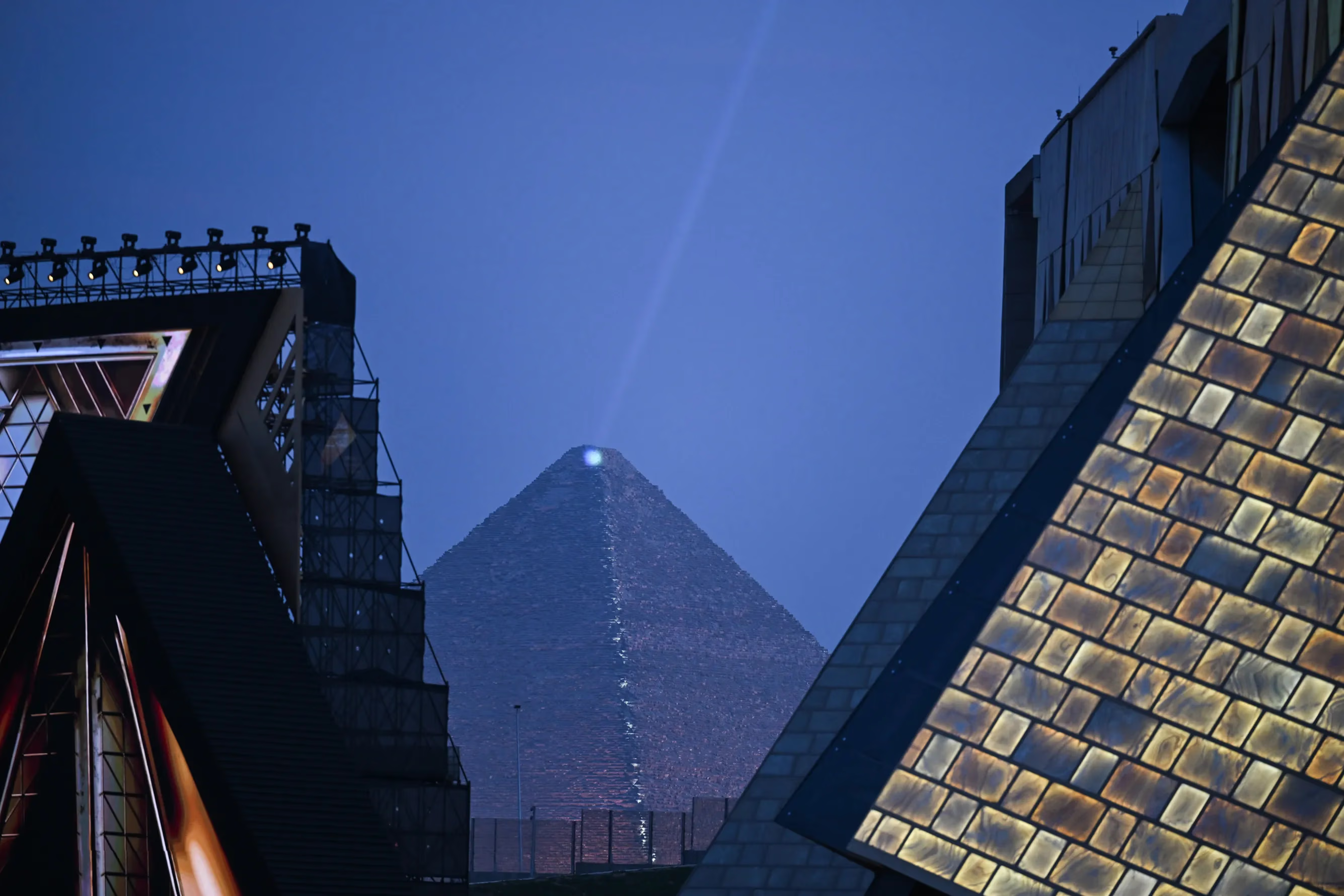Construction of the GEM began in the mid-2000s and was originally scheduled for completion in 2012. Those plans were derailed by funding shortages, political instability in Egypt and the wider Middle East, and later by the COVID-19 pandemic. As a result, the project took more than 20 years to complete.
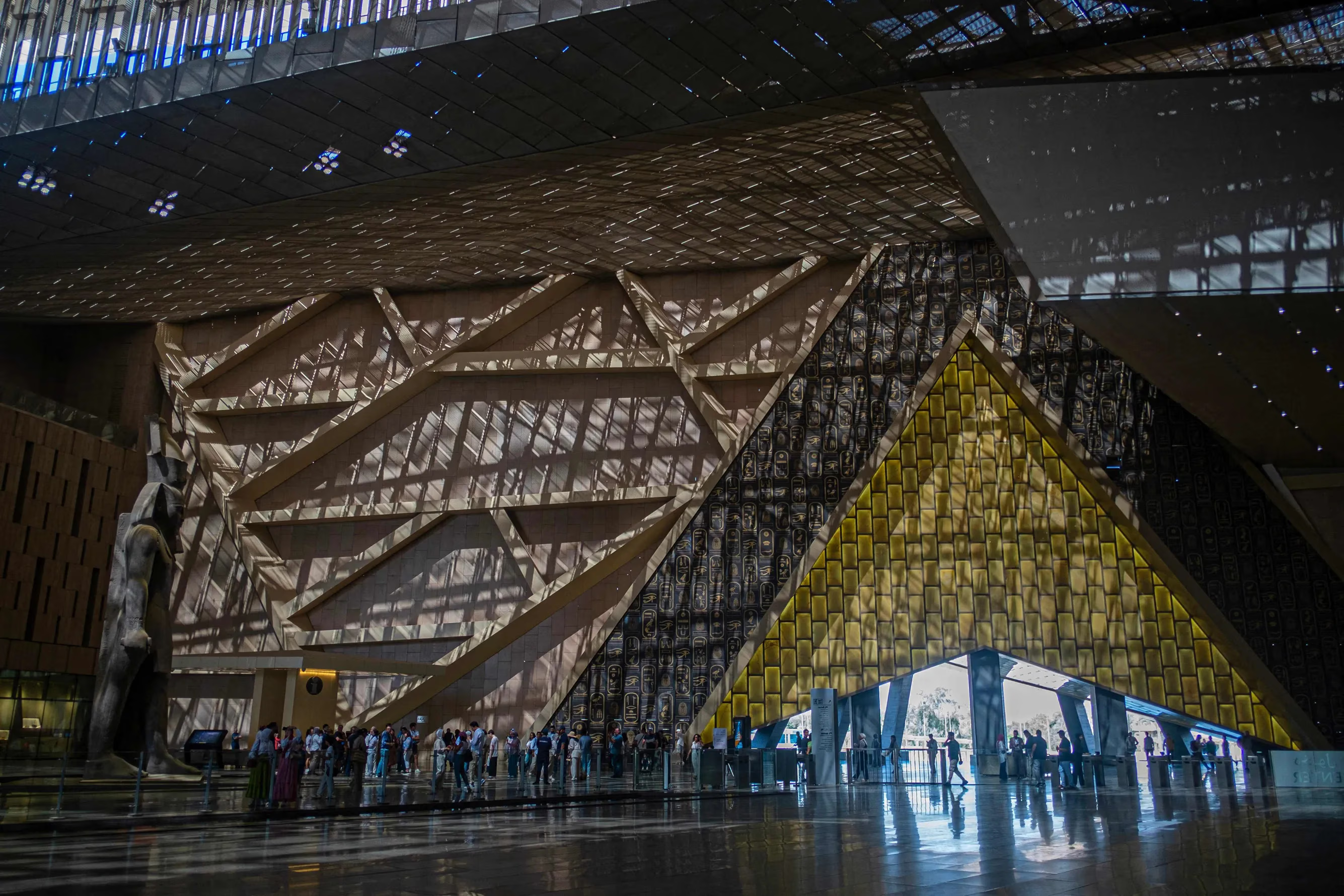
The museum’s atrium covers 10,000 square meters. This photo, taken on May 5, 2025, shows the GEM operating in test mode and welcoming its first visitors. The museum will open to the general public on November 4.
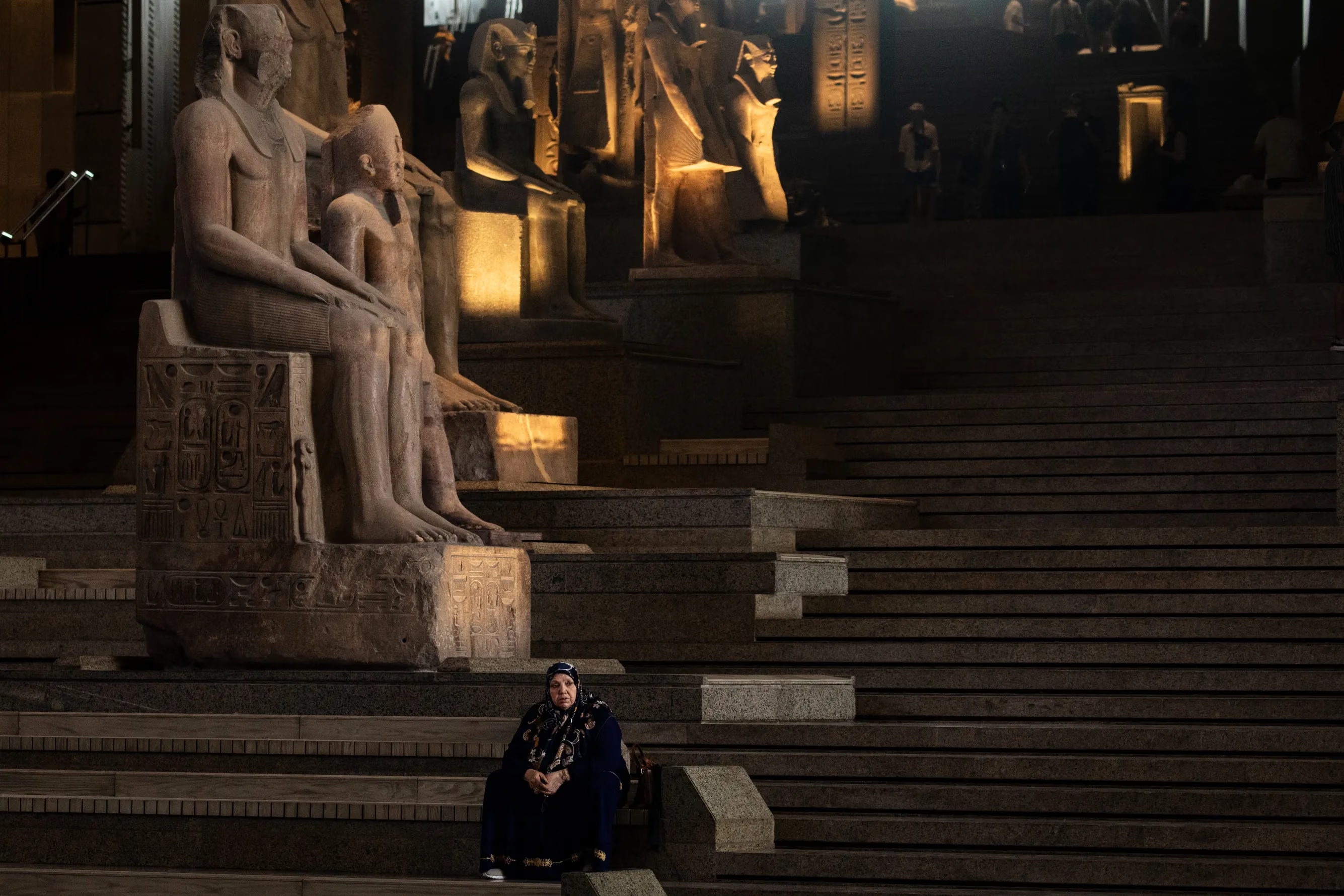
The museum’s grand staircase spans all six floors and leads to 12 main halls. It alone displays more than 60 unique artifacts.

The museum’s atrium covers 10,000 square meters. This photo, taken on May 5, 2025, shows the GEM operating in test mode and welcoming its first visitors. The museum will open to the general public on November 4.

One of the museum’s most striking exhibits is the statue of Pharaoh Ramses II. The 11-meter, 83-ton monument is displayed in the GEM atrium.
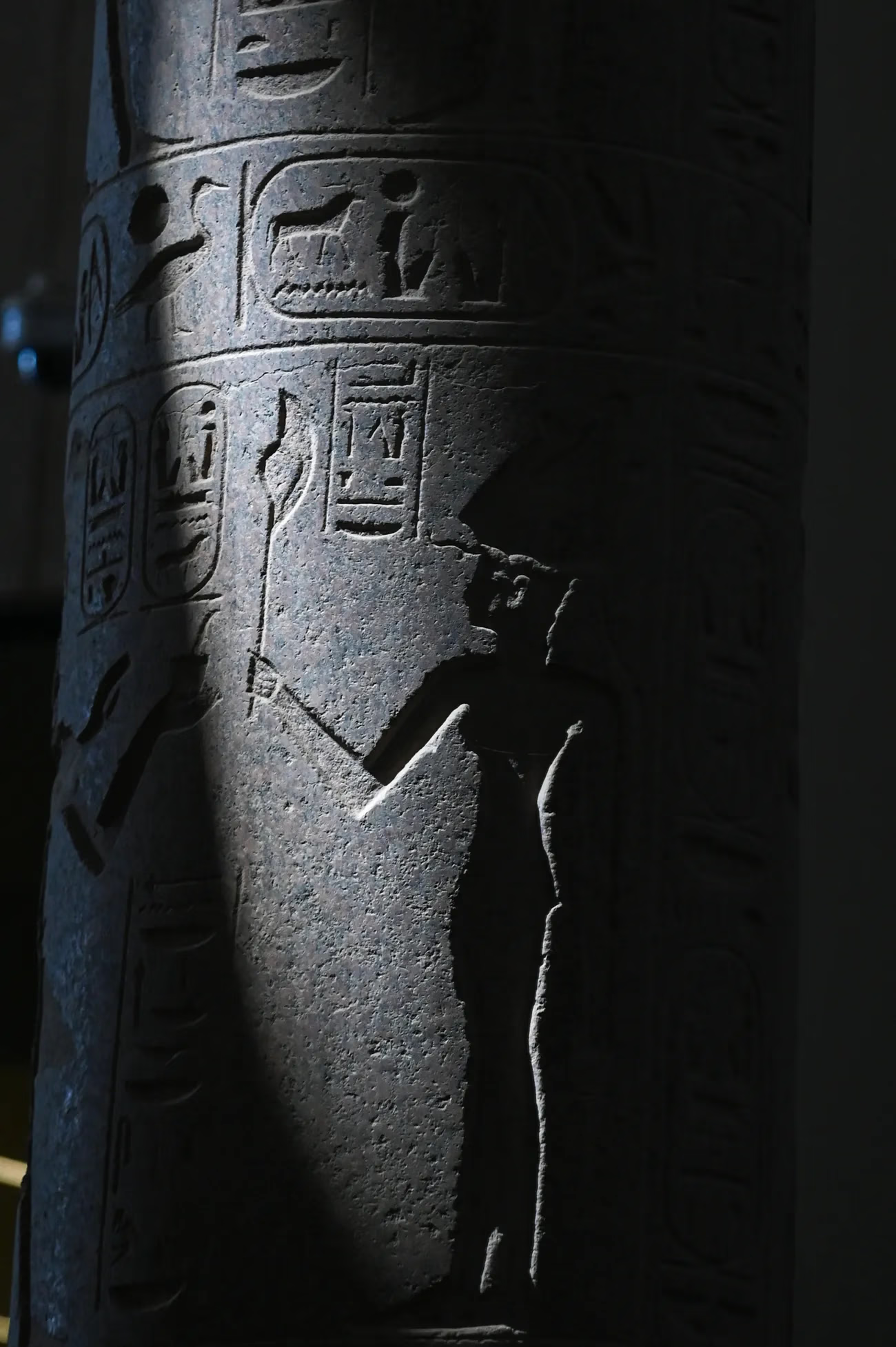
The collection will feature between 70,000 and 100,000 unique pieces of ancient Egyptian art.

According to Egyptian authorities, the GEM houses the largest collection in the world dedicated to a single civilization.
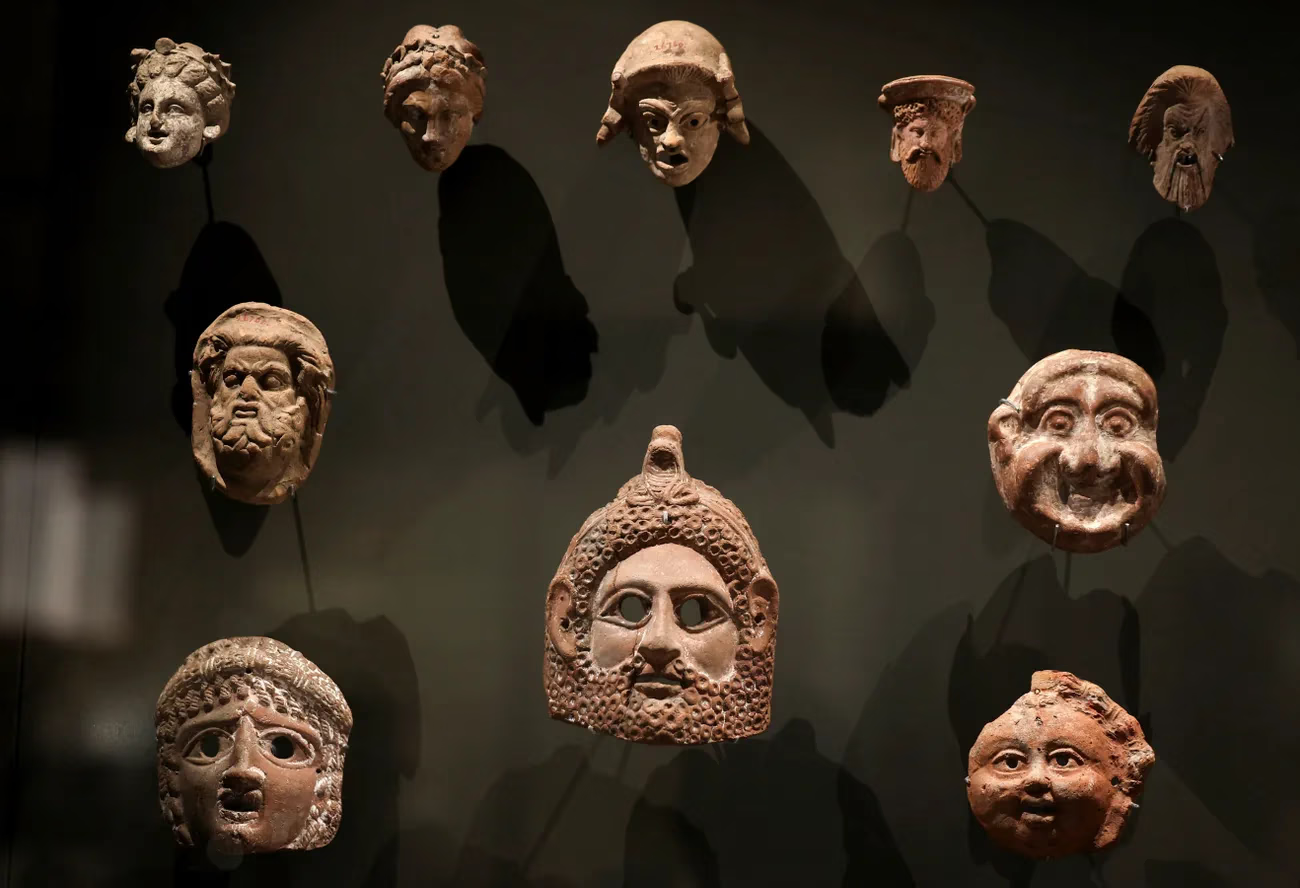
Many of the GEM’s artifacts have never before been displayed to the public. For example, visitors can see 5,500 objects from the tomb of Pharaoh Tutankhamun, of which only 1,800 were previously exhibited.
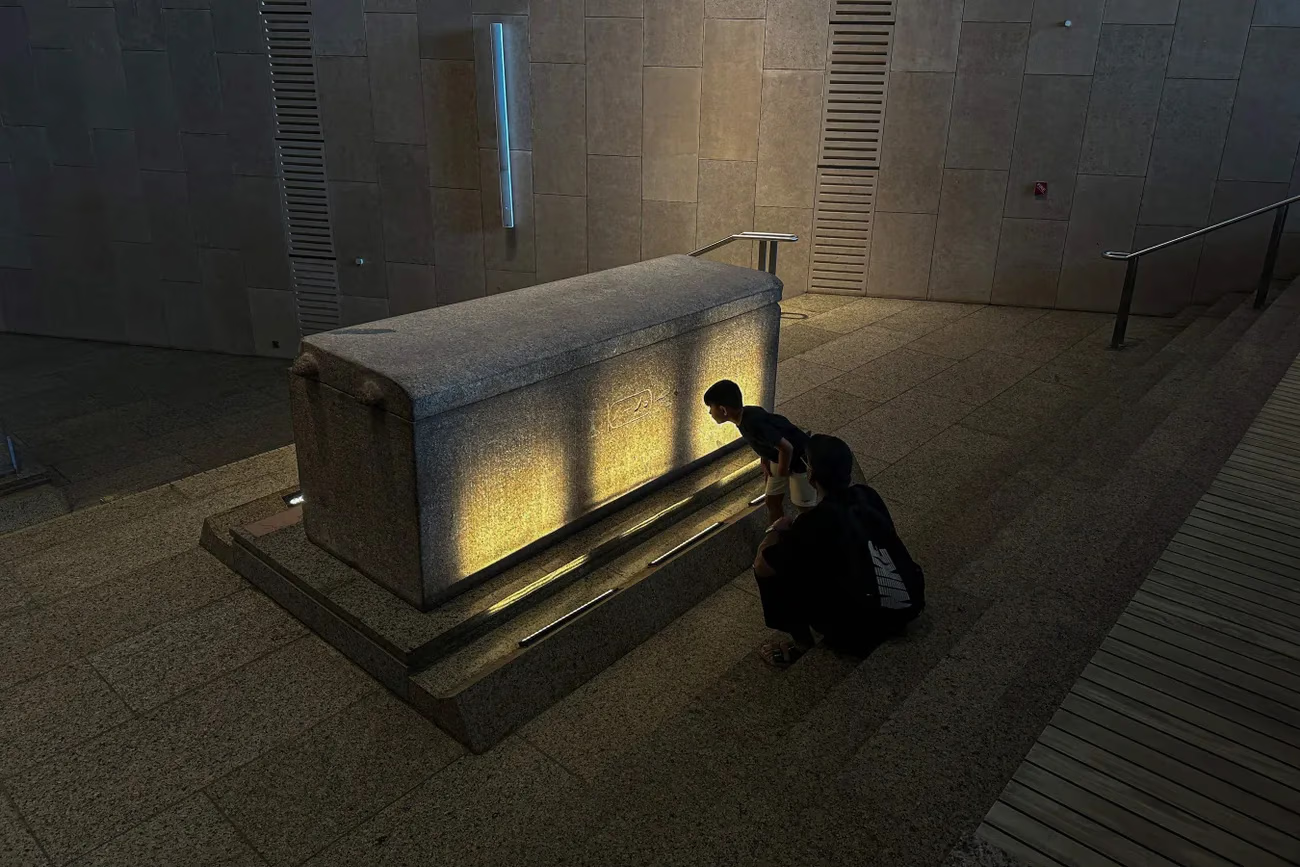
Visitors at the museum’s test opening on October 15, 2025, examine one of the sarcophagi on display.

A cat statue from the GEM collection. In ancient Egypt, the cat was a symbol of fertility and the sun. Numerous deities in Egyptian mythology were also associated with felines.
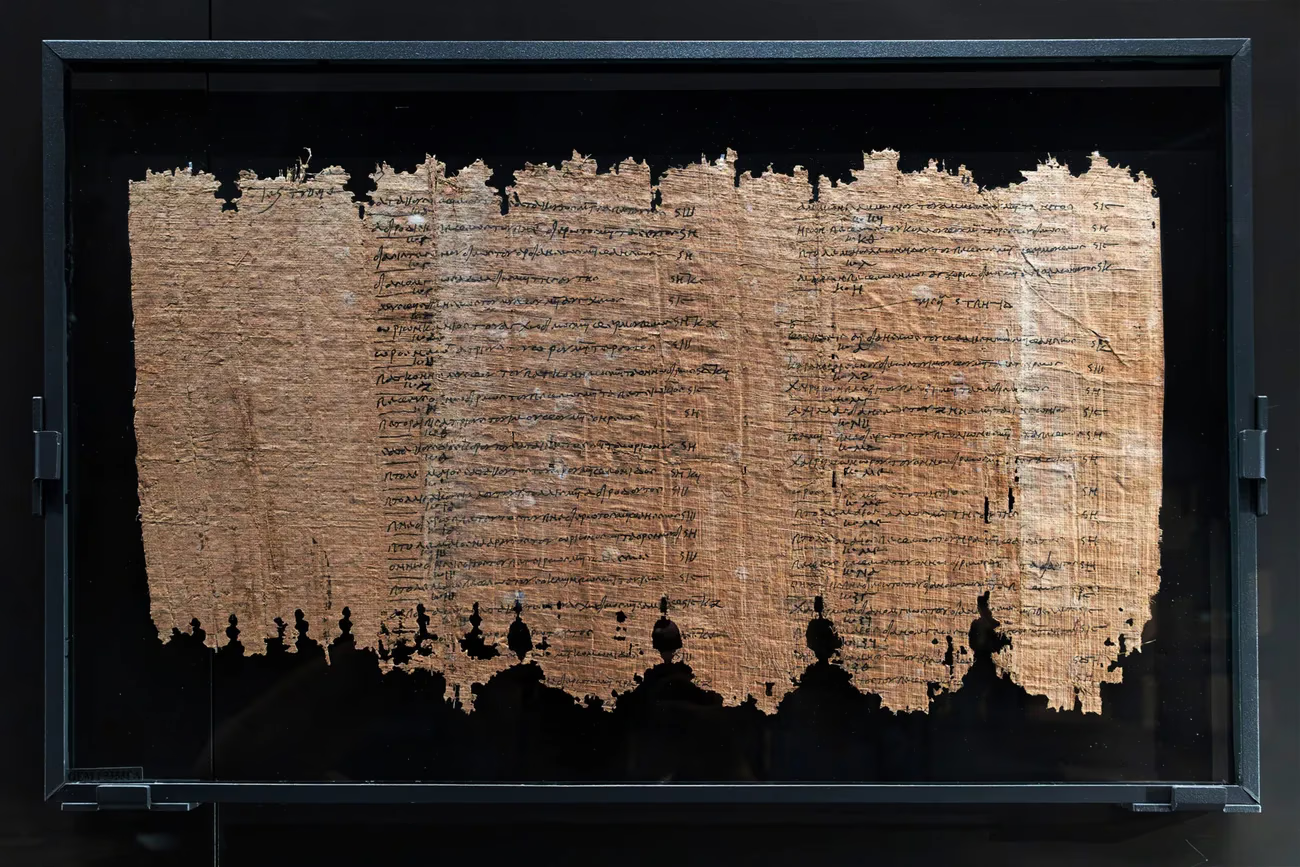
Another highlight of the museum is the Oxyrhynchus Papyri — part of a vast collection of manuscripts discovered near Oxyrhynchus in Egypt. The oldest papyri date back to around 50 CE.

At the GEM, visitors can also watch restorers at work through large windows of the conservation lab, where, among other pieces, a sarcophagus from Tutankhamun’s tomb is being restored.
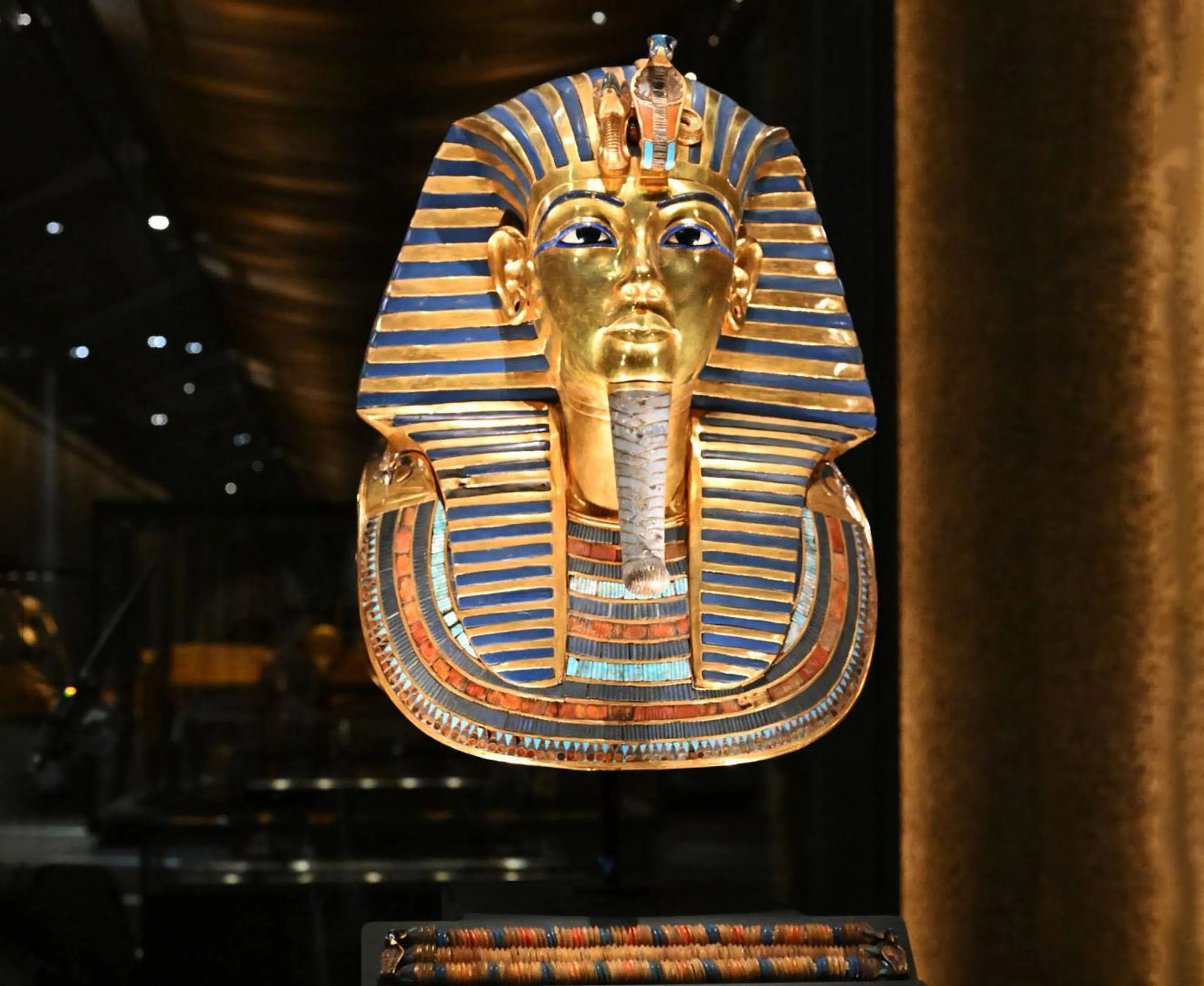
The most valuable part of the GEM collection is the 5,500 objects from Tutankhamun’s tomb, of which only 1,800 were previously exhibited. Pictured here is the pharaoh’s golden funerary mask.
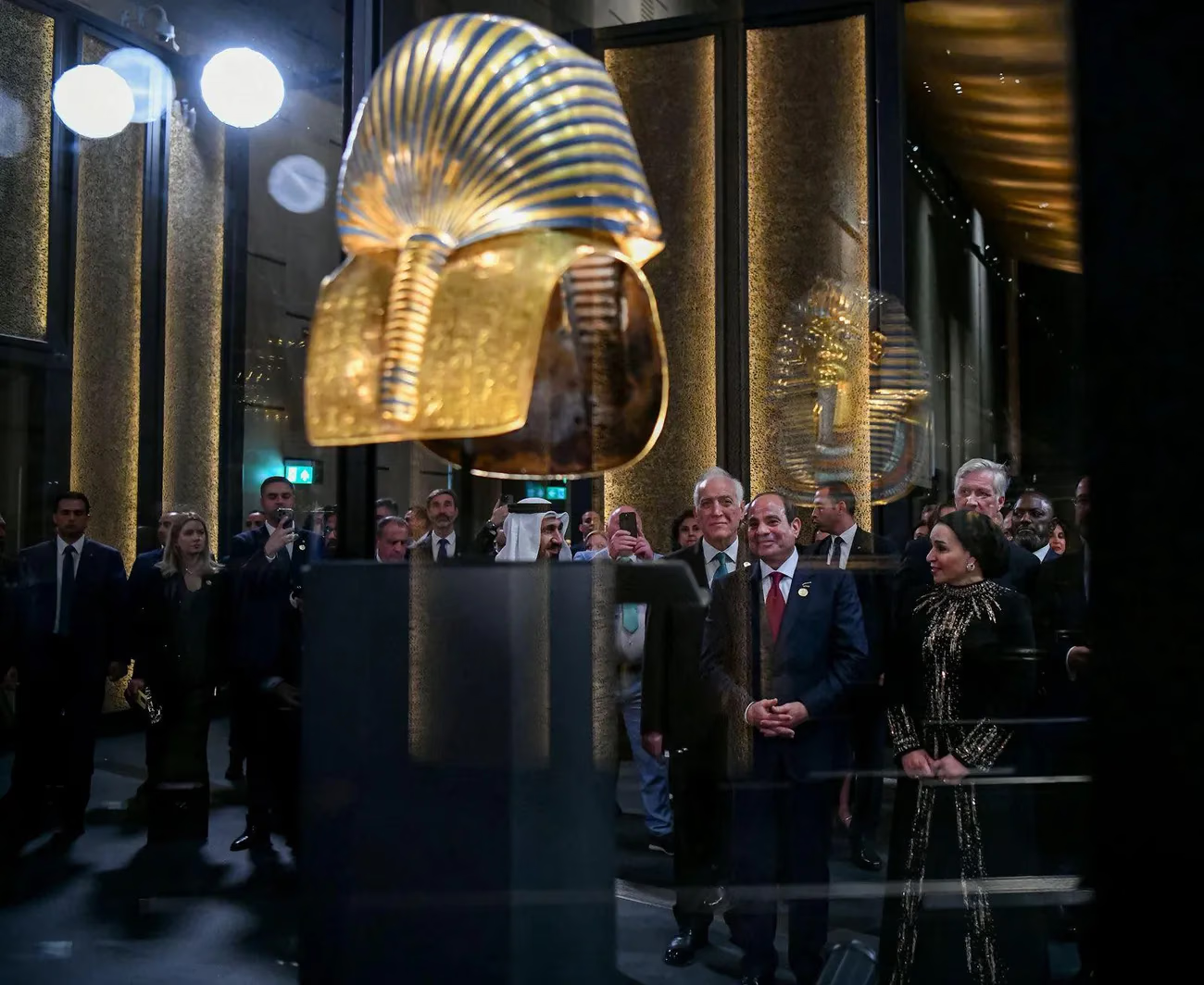
In this photo, taken during a tour on October 1, 2025, Egyptian President Abdel Fattah el-Sisi, his wife Entissar, and members of official delegations from more than 80 countries explore the collection.
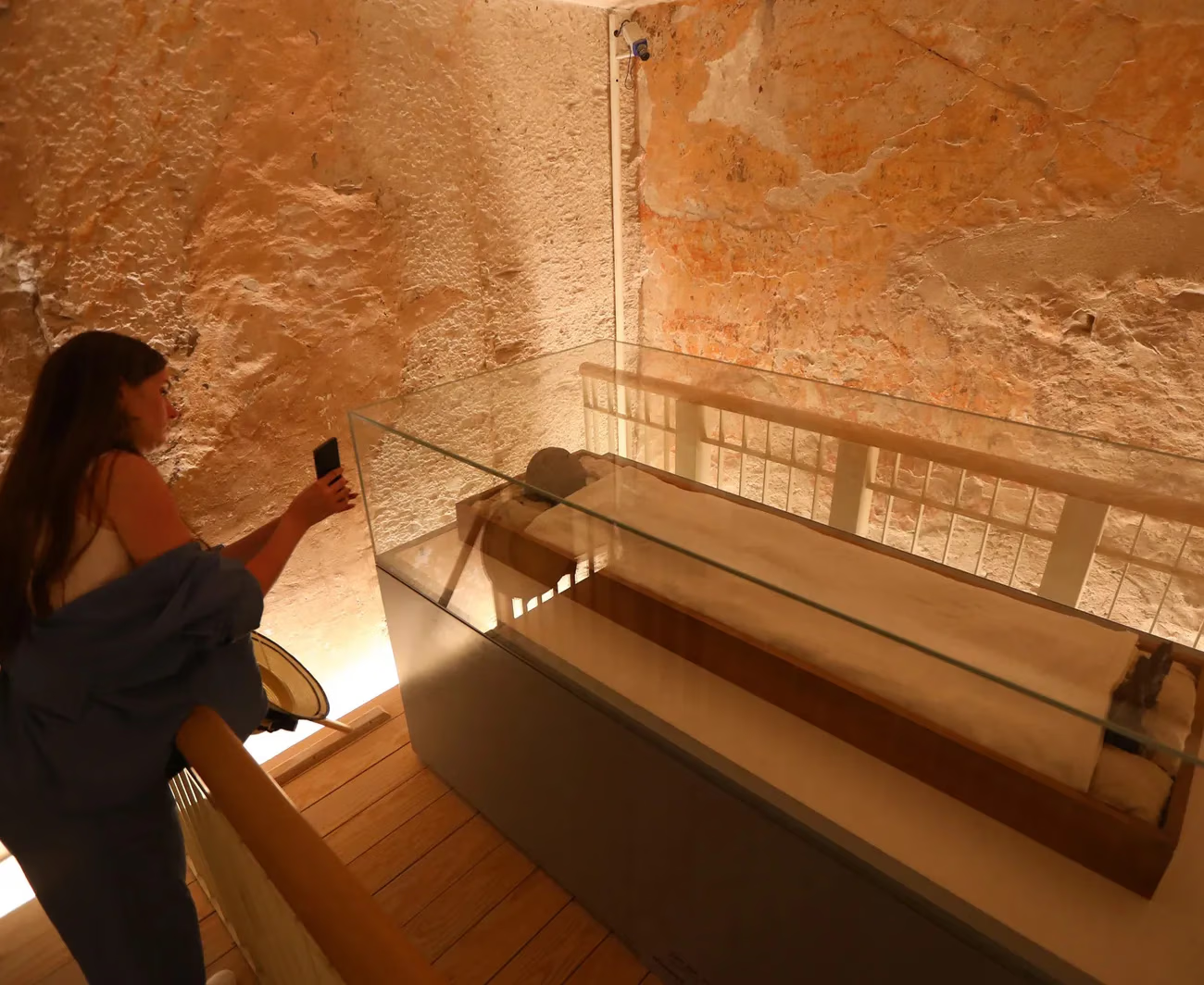
British Egyptologist Howard Carter discovered Tutankhamun’s tomb in the Valley of the Kings in 1922. This photo, taken on November 4, 2022 — the centenary of the discovery — shows a visitor at the Luxor Museum viewing the pharaoh’s mummy.
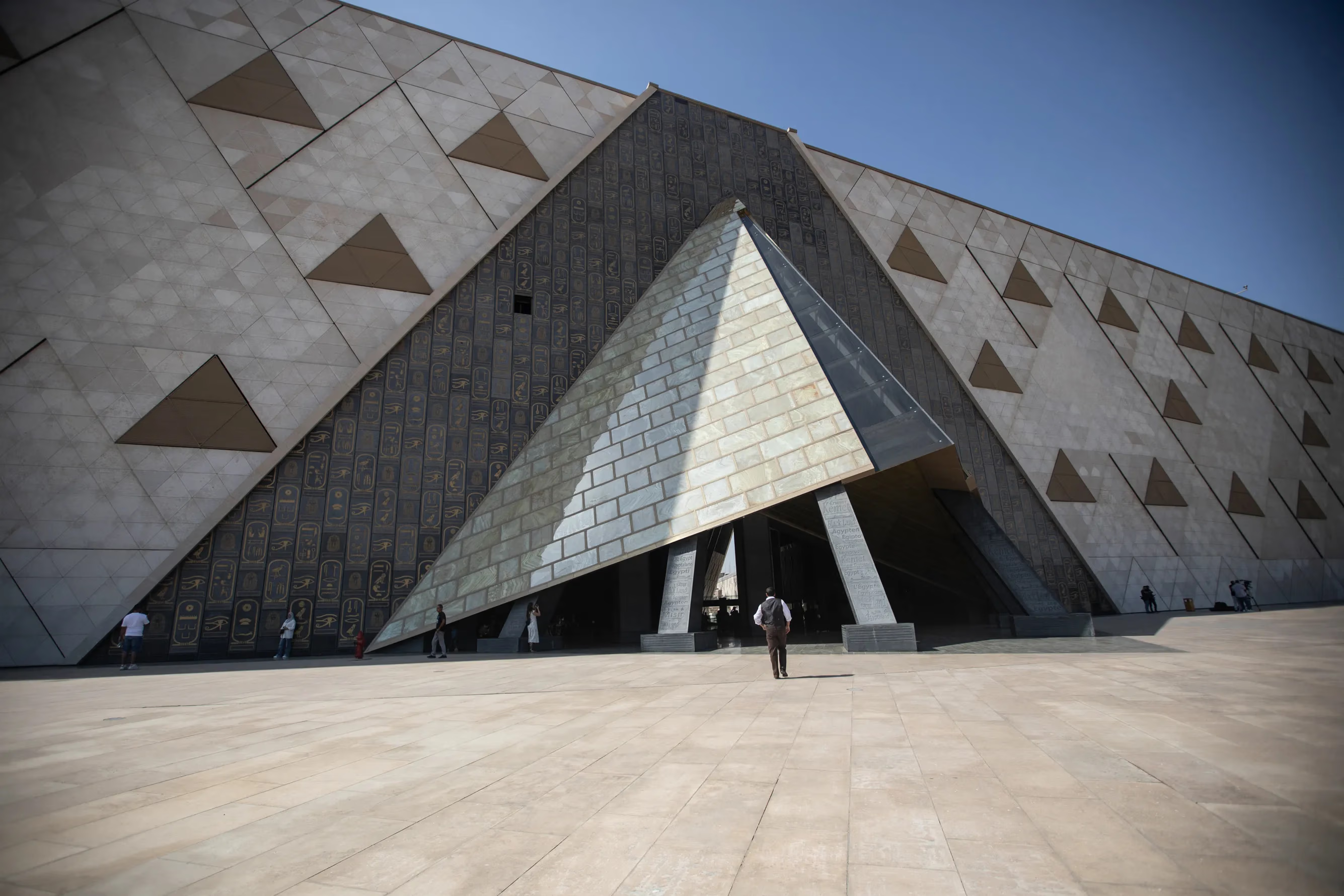
The architectural competition for the Grand Egyptian Museum attracted 1,557 entries from 82 countries. On June 2, 2003, the Irish firm Heneghan Peng was announced as the winner. The design was developed in collaboration with BuroHappold Engineering and Arup Group.

In Egypt, a debate is underway about the high price of entry tickets by local standards. Admission to the GEM will cost Egyptian citizens 200 pounds — roughly four US dollars — while foreigners will pay around 25 dollars. Even the discounted prices, however, seem excessive to many Egyptians.
The museum’s architecture is designed to lead visitors step by step from the modern world into the age of the pharaohs. The building, located on the Giza Plateau, is positioned so that its horizontal line never rises above the height of the pyramids — creating a visual harmony with the surrounding landscape and ancient monuments.
